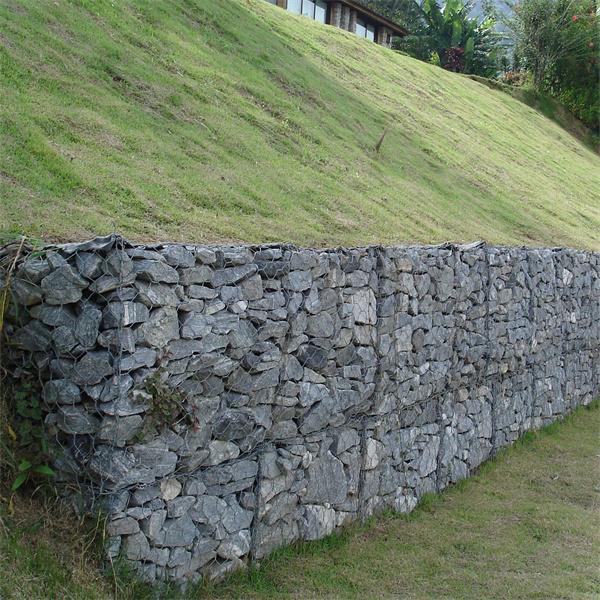dec . 24, 2024 04:55 Back to list
Gabion Cube Manufacturing Solutions for Durable Landscape and Erosion Control
Understanding Gabion Cube Factories A Comprehensive Overview
Gabions, derived from the Italian word gabbione, meaning big cage, are wire mesh containers filled with rock, concrete, or other materials. They serve numerous purposes in civil engineering, landscaping, and environmental conservation projects. Gabion cubes, specifically, are box-shaped structures that have gained considerable popularity due to their versatility and functionality. In this article, we will explore the significance of gabion cube factories, their manufacturing processes, and the diverse applications of gabion cubes.
The Role of Gabion Cube Factories
Gabion cube factories are specialized manufacturing facilities that produce these unique structures. The demand for gabion cubes has surged due to their environmental benefits and aesthetic appeal. These factories are equipped with advanced machinery and technology to ensure the efficient production of high-quality gabions.
The factories typically follow a series of steps in the production process, starting from sourcing raw materials, such as high-strength steel wire to create the mesh containers. The wire is often galvanized or coated with other corrosion-resistant materials to enhance durability, especially in harsh environmental conditions.
Manufacturing Process
1. Raw Material Preparation The process begins with the selection and preparation of high-quality steel wire. The wire is often cut to specified lengths and intricately woven into mesh sheets, which later form the gabion cages.
2. Mesh Welding In many factories, the cutting of wire mesh involves automated welding techniques. The factory machines precisely weld the wires at the seams to ensure structural integrity. This step is crucial as it determines the strength and durability of the final product.
3. Shaping and Forming After welding, the mesh sheets are shaped into cubes or boxes, depending on the design and purpose of the gabion. This shaping is tightly monitored to maintain uniformity in size and dimensions, ensuring that each unit meets industry standards.
4. Filling and Assembly Once the gabion cubes are formed, they are sent to a filling station where they are filled with suitable materials, such as stones or concrete. The filling process is essential as it adds weight and stability to the structure. Some factories offer specialized filling materials, while others may leave it to clients to choose the most appropriate filling based on their project needs.
gabion cubes factory

5. Quality Control Throughout the manufacturing process, quality control is crucial. Factories typically employ rigorous testing procedures to ensure that each gabion cube meets the required standards for strength and durability. This step often includes stress tests and inspections to identify any potential weaknesses.
Applications of Gabion Cubes
Gabion cubes are widely used for various applications due to their robust nature and aesthetic versatility.
- Erosion Control One of the most common uses of gabion cubes is in erosion control. They are strategically placed in flood-prone areas, riverbanks, and slopes to prevent soil erosion and stabilize the land.
- Retaining Walls These cubes are often utilized to create retaining walls, providing support to elevated landscape areas. Their ability to absorb and dissipate water pressure makes them exceptionally effective in maintaining earth structures.
- Aesthetic Landscaping Gabion cubes can be incorporated into landscaping designs, functioning as decorative elements or planters. Their industrial appearance, combined with natural stone fill, creates a modern yet rustic look, enhancing the visual appeal of outdoor spaces.
- Noise Barriers In urban areas, gabion cubes can serve as effective noise barriers, utilizing their mass and density to absorb sound pollution from roads and traffic.
Conclusion
Gabion cube factories play a pivotal role in the production of these versatile structures that have become indispensable in modern engineering and landscaping. The manufacturing process, characterized by innovative technology and rigorous quality control, ensures that gabion cubes are not only functional but also durable and aesthetically pleasing. As environmental concerns and urbanization continue to rise, the demand for gabion cubes is likely to grow, making gabion cube factories an essential part of our infrastructure development strategies. Whether for erosion control, retaining walls, or striking landscape features, gabion cubes provide solutions that align with modern engineering practices and sustainable design principles.
-
HESCO Gabion Baskets for Coastal Erosion Prevention
NewsAug.22,2025
-
Longevity and Durability of River Rock Gabion Walls
NewsAug.22,2025
-
How to Integrate Gabion 3D Walls in Urban Planning
NewsAug.22,2025
-
Reno Mattress Gabion Applications in Civil Engineering
NewsAug.22,2025
-
How to Install Wire Mesh for Gabion Baskets Properly
NewsAug.22,2025
-
Best Materials for Filling a Chain Link Gabion
NewsAug.22,2025
-
Wire Mesh Thickness Impact on Gabion Wall Load Bearing
NewsAug.12,2025






